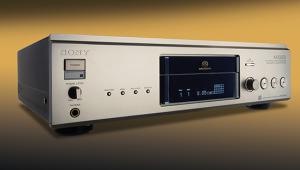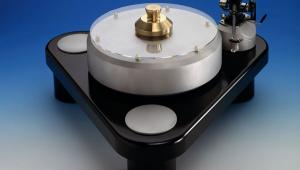Major to Minor

Feeling a bit like the boy who cried ‘Wolf!’, I still can’t help but regard this new range of speakers from Apogee as ‘ribbons for the masses’. But unlike the last models that inspired this sort of reaction – the Stages and Calipers – the new Centaurs really do make Apogees accessible to a wide range of consumers. And not only by virtue of their cost.
The name, credited to Brian Rivas of Pinewood Audio, is the neatest yet to denote ‘hybrid’. And as the Centaurs are hybrids, with traditional Apogee ribbons mated to dynamic woofers, the company has chosen to regard them as a truly separate model range.
Space Invaders
The Centaurs will invite into the fold a number of hi-fi enthusiasts who were tempted by the full-range models but wouldn’t give up their existing amplifiers or make room for speakers craving whole square metres of lebensraum. The Centaurs, unlike their all-ribbon siblings, rewrite the rules of Apogee ownership in the following ways:
- High sensitivity and a 6ohm impedance make them suitable for ‘real world’ amps. I’ve heard them work beautifully with a 50W/ch NAD.
- The Centaurs give up little ‘air’ even when placed within 12in of the back wall. Hell, they sound pretty swell when shoved right up against the wall, because the depth of woofer enclosure keeps the ribbon at least 8in away from it.
- They work happily with valve amplifiers, including tiny ones.
- They offer the decades-old familiarity of cone-sourced bass.
The range consists of three models, this review dealing with the £1149 Centaurus Minor at the bottom of the range, and the £4200 Centaurus Major at the top. In between sits the £1645 Centaur.

Square Numbers
From the front, these speakers look like traditional Apogees that have been squared off, and have their bass ribbons covered by black grilles instead of the familiar see-through mesh. But now the grilles cover large baffles containing dynamic woofers rather than planar-shaped bass drivers. At the back, meanwhile, you see the enclosures dedicated to the woofers, which conveniently provide each Centaur with cross-sections that preclude the need for the ‘legs’ which support the ‘all-panel’ models. Apogee provides screw-in spikes, which allow you to dial in some tilt, as important here as it is with the Stages if you wish to recreate 3D sound with any accuracy.


















































